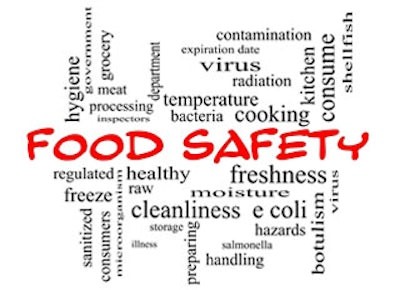
Traditionally, food safety programs have focused on more tactical activities such as auditing and product testing. Today, though significant strides have been made to ensure food safety, organizations are still looking for more comprehensive programs that can integrate food safety activities into core business functions and processes.
A common organizational goal lies in achieving an enterprise-wide food safety culture. This necessitates that the responsibility for food safety spans various functions of the organization, and becomes embedded in the business and its day-to-day activities. The organization must also focus on anticipating risk proactively and putting the necessary controls in place to ensure food safety.
Organizations can further build out a culture of food safety by visibly committing to policies that have been publicly supported by senior management. Top management must also play a role in regularly reviewing the effectiveness of food safety programs across all levels and functions of the organization.
Common Pitfalls and Lessons Learned
The most common pitfalls when it comes to building a food safety culture stem from the lack of management buy-in and support. Failures also arise in the absence of clear goals, the failure to develop performance measures, and the failure to manage projects and ensure adherence to timelines. In some organizations, though certain food safety programs are in place, they lack proper documentation mechanisms.
Food safety measures can be implemented following the DMAIC cycle that consists of five steps — defining, measuring, analyzing, improving, and controlling. Management should also have a robust Corrective and Preventive Action (CAPA) program that deliberately focuses on preventive actions that can help support the organization’s food safety program.
Organizations operating within the food sector must ensure that the food safety culture is pervasive across the organization, as well as across the extended supply chain. Products should only be sourced from suppliers who have good food safety systems in place. Organizations should engage in business only with GFSI certified suppliers, and should also play an active role in educating suppliers on the importance of food safety. Additionally, partaking in an open discussion with customers about their satisfaction with the organization and its products and services, and then leveraging that feedback to drive future activities and goal-setting criteria, is just as important.
Leveraging Technology to Ensure Food Safety
Technology plays a vital role in helping organizations adopt a more integrated approach to food quality and safety. A structured information management program, supported by technology, can capture critical supplier and material information that can be used to better manage suppliers and sub-suppliers. Technology can also streamline relationship management between the organization, its suppliers, its products and materials, its customers, and compliance activities. Technology provides a central management function for critical information, such as regulations and standards, as well as policies and procedures, hazard analysis plans, preventive control plans, pre-requisite programs, verification procedures, monitoring procedures, and product recall plans.
Conclusion
Organizations in the food sector have leveraged technology to aid in early risk detection, drawing on sophisticated risk-intelligence gathering, monitoring, and analysis mechanisms. Furthermore, centralizing critical information for a more integrated review, analysis and investigation processes is key. A proactive approach to food safety rests on the ability of the organization to manage the entire life cycle of food safety, from employee training programs and awareness, to internal food safety policies, to sound business strategies that are woven into the day-to-day operations of the business and across its third party and supplier ecosystem. Most importantly, collaboration, especially in challenging times such as during a product recall, is cornerstone to the development of a successful long-term food safety culture.























